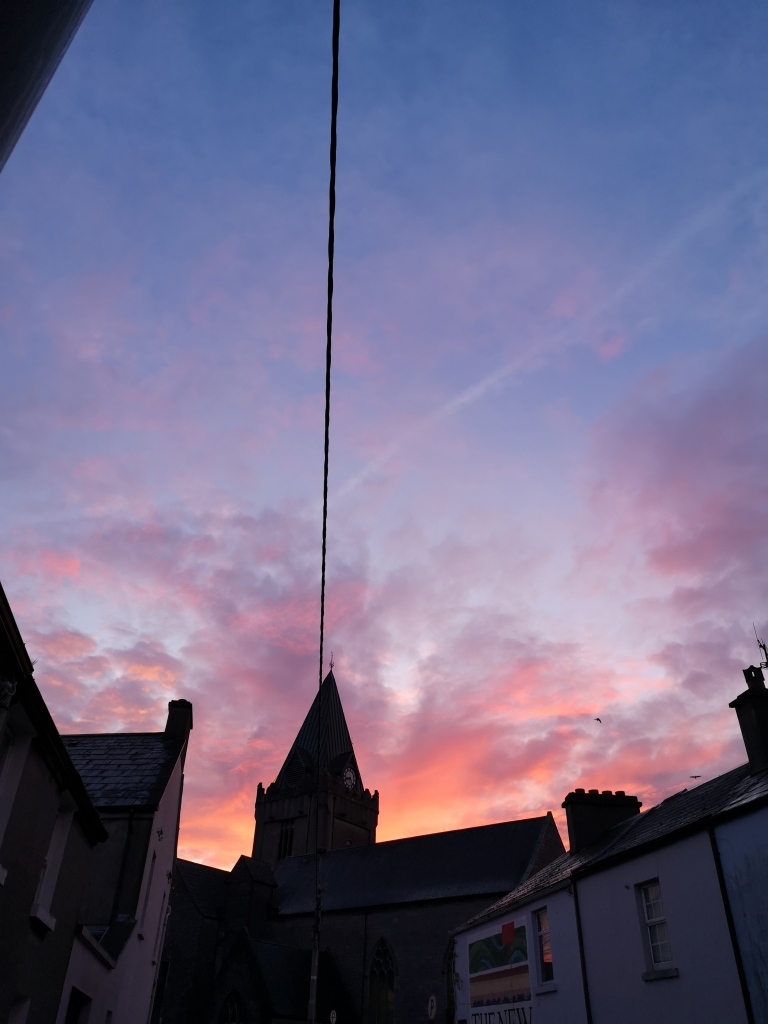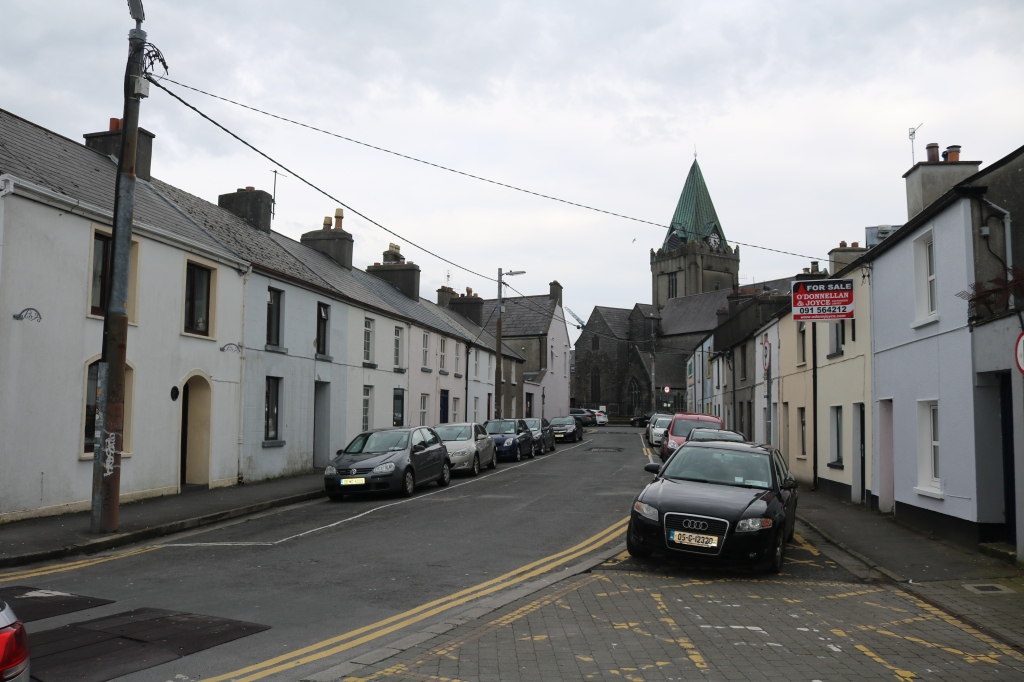My family and I live in Galway City Ireland. I live with my daughters 50% of the time in Bowling Green, one of the oldest neighborhoods in the city and famous because Nora Barnacle, if you don’t know, was the wife and inspiration of celebrated Irish writer James Joyce. She lived in this house with her mother and six siblings until 1904, when Nora left Galway and travelled east for Dublin, where she met Joyce. There is more to this street and it has no doubt changed over the centuries but I think the character has remained.

At the beginning of the last century The Bowling Green Mills were in existence and renowned for their homespuns and specialised in tweeds, rugs and blankets. Michael Lydon also manufactured fishing tackle. At the entrance to the street the Church of St Nicholas was built in 1320 and Franciscan friars arrived in Galway in 1296. Us Irish and especially Galwegians are known for being laid back and we have an old saying “ah sure it will do for now.” In 1883 the numbering system of the houses in Bowling Green were in a disarray and there were four number 5s, nowadays there is just one number 5 and that is were I live. Our little street is now more or less exclusively residential, while the frontage of the houses remain pretty much the same the insides bare no resemblance to that time in history. Our little community varies in age, race, religion etc but we are neighbours and we all feel connected to our little street we call home. Galway was first recorded in 1124 and in 1232 a baron named Richard De Burgh took Galway and created a town. For centuries Galway was dominated by 14 families known as the tribes of Galway. The mayor and the leading citizens usually came from these 14 families. They were the Athy, Blake, Bodkin, Browne, Darcy, Deane, French, Font, Joyce, Kirwan, Lynch, Martin, Morris and Skerrett families.

In the 16th century Galway was still a thriving town and port. The main import was wine. In 1505 some of the streets of Galway were paved. In 1610 James the first gave Galway another charter, which made the city and the land for 2 miles around a county in its own right. However Galway suffered fatally in 1649 when plague struck the city. Over 3,700 souls lost their lives. An extraordinarily rough winter along with the arrival of thousands of refugees from Limerick created more misery for the town. Sir Charles Coote allowed the refugees to enter Galway, fully aware that of the troubles that they were bringing to Galway. In August 1651 the English under Edmund Ludlow laid siege to Galway. After a long fight Galway finally surrendered in April 1652. Throughout the 17th century and 18th century Galway continued to thrive and in the late 18th century suburbs started to grow outside the walls.

At the beginning of the 19th century the population of Galway was about 5,000 but fell during the 19th century. Galway and Count suffered severely during the potato famine of 1845-49 and there was a huge loss of population. A great many of the inhabitants of Galway in the 19th century lived in poverty and squalor. During the 20th century Galway revived. By 1950 it had about 21,000 inhabitants. The population of Galway today is estimated to be close to 80,000.
Galway is the European Capital of Culture this year and everything the City had planned will be affected by Covad-19 and I fear the opportunity to show off our wonderful city will be lost. For centuries Galway has survived whatever has been flung in its direction and the Coronavirus will be no different. It poses a very different threat and Galwegians will face it head on. Looking through my window onto Bowling Green the street is very quiet and eery. I haven’t seen any neighbours venturing outside so I am sure they are stocked with food and remain safe. This tight community will keep a watchful eye out for each other far beyond Coronavirus.

Community can be a formidable force, capable of achieving the seemingly impossible. To confront this crisis, we need to work together. My worry is, this is something we can’t see, there is no Hurricane damage, no tsunami damage! What I mean I fear people will become frustrated, bored and stressed and feel the need to blow off steam, we can’t go to the bar or gym we are stuck indoors. We all have a profound need for social connection and because of Coronavirus we feel vulnerable, a lack of control, we are scared! Soliders often speak of the bond that occurs with them on the battlefield, a profound human bonding despite the anguishes of war. Life makes no promises, today its frightening but today, tomorrow and next week Coronavirus will inspire kindness, connection and we will come together and support each other, lean on one another for strength, laugh. This is what a neighbourhood look likes. #Besafe